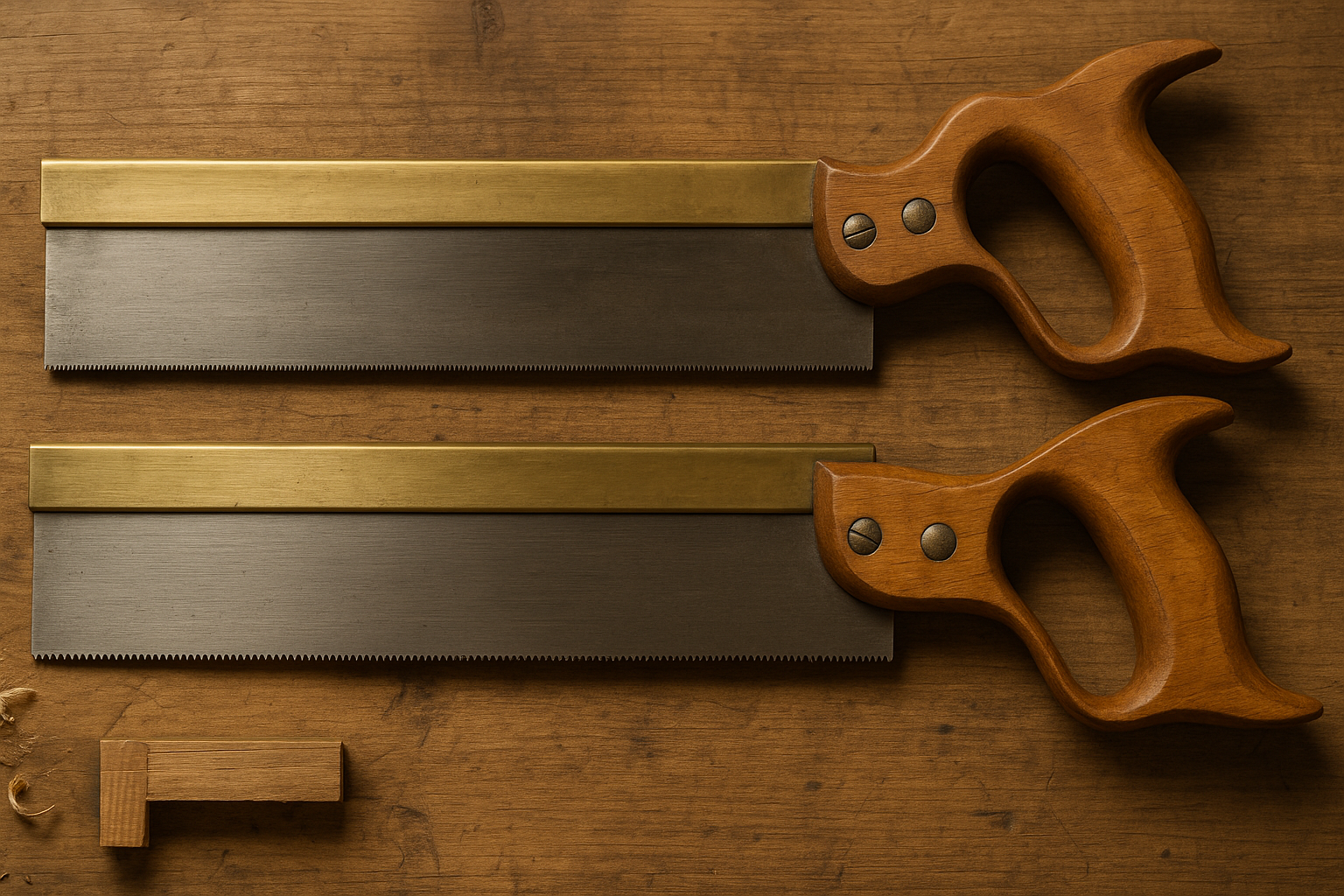In the world of fine woodworking, precision is everything. The difference between a clean joint and a crooked cut often comes down to the right saw for the job. Among the most commonly confused hand tools are the carcass saw and the tenon saw — both backed by centuries of craftsmanship and designed for delicate, accurate work. At first glance, they look almost identical: small backsaws with reinforced spines and fine teeth. But their differences, though subtle, make each one uniquely suited to specific tasks.
The carcass saw is the more versatile of the two, used for cutting across and along the grain. It’s the craftsman’s go-to tool for general joinery — the kind of work that forms the foundation of furniture making. With teeth typically filed in a hybrid pattern, the carcass saw strikes a balance between rip and crosscut performance. This allows woodworkers to cut tenon shoulders, trim dovetails, or refine joints with accuracy. The saw’s reinforced back keeps the blade rigid, reducing flex during precise cuts. It’s ideal for quick, clean joinery where smoothness and control matter more than depth.
The tenon saw, by contrast, is designed for strength and straightness over versatility. Its teeth are generally filed for rip cuts — cutting along the wood grain — and the blade is slightly deeper to handle larger joints, especially tenons. Tenons are the projecting parts of a mortise-and-tenon joint, one of woodworking’s oldest and most reliable techniques. Because of its tooth geometry and depth, the tenon saw cuts slower but with greater precision and consistency. For craftsmen building doors, frames, or furniture requiring strong structural joints, this saw remains a workshop essential.
Choosing between a carcass saw and a tenon saw depends on what kind of work you do most often. If you’re focusing on general joinery or detailed furniture components, the carcass saw’s flexibility will serve you better. But if your projects involve structural joints or frame construction, the tenon saw provides the straight, dependable cuts required for strength and alignment. These distinctions reflect a theme that carries across all tool design — function follows material and technique. Just as discussed in DeWalt vs. Milwaukee: Which Power Tool Brand Delivers the Best Value in 2025?, every tool’s purpose comes down to the right balance between precision, power, and control.
Both saws also share one key characteristic: longevity through care. Keeping teeth sharp, handles aligned, and blades clean ensures decades of use. This practice echoes the craftsmanship ethics explored in Five Tool Maintenance Habits Every Maker Should Know in 2025 — maintaining tools is just as important as mastering them. In an age of electric alternatives and automation, these classic saws continue to earn their place through reliability, simplicity, and the unmistakable feel of manual precision.
Modern woodworkers often combine traditional saws with digital aids like cutting jigs, angle gauges, or AI-assisted measuring systems. Yet even in a world of smart tools and laser precision, hand saws remain irreplaceable. They provide feedback no machine can replicate — the resistance of the grain, the rhythm of the stroke, and the satisfaction of a perfect joint cut by hand. Whether it’s a carcass or tenon saw, these tools carry forward the essence of craftsmanship: skill guided by simplicity.
